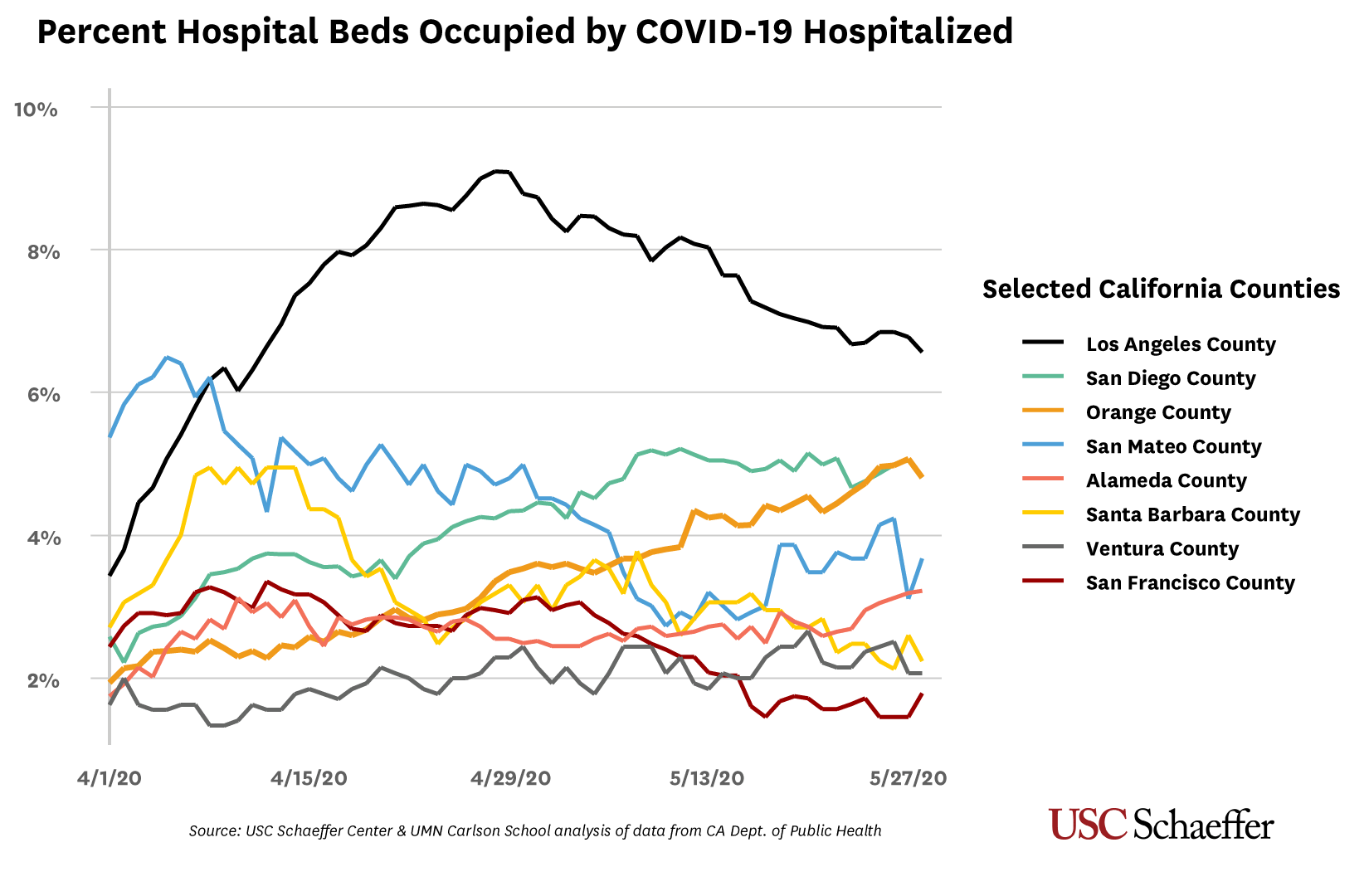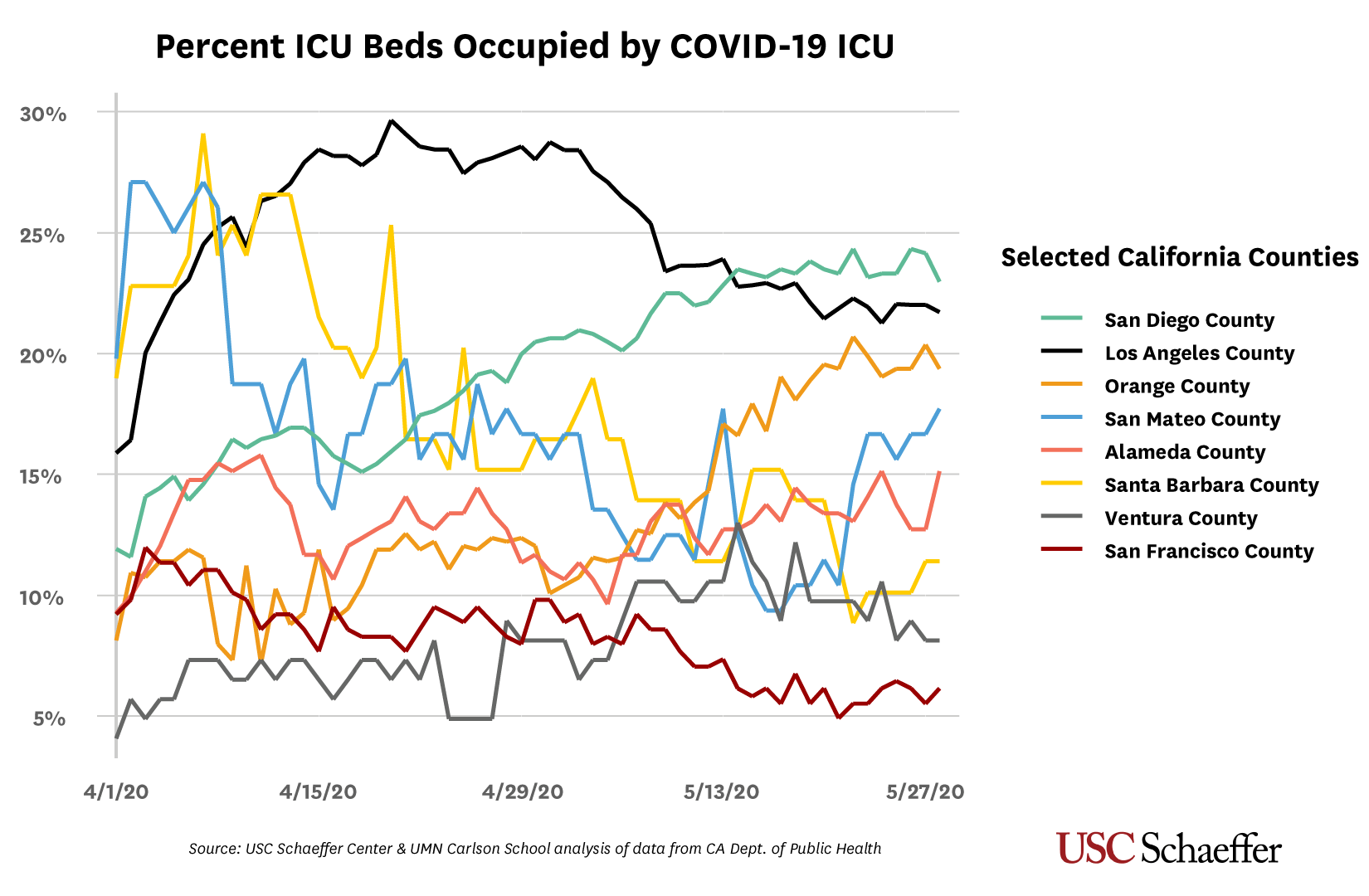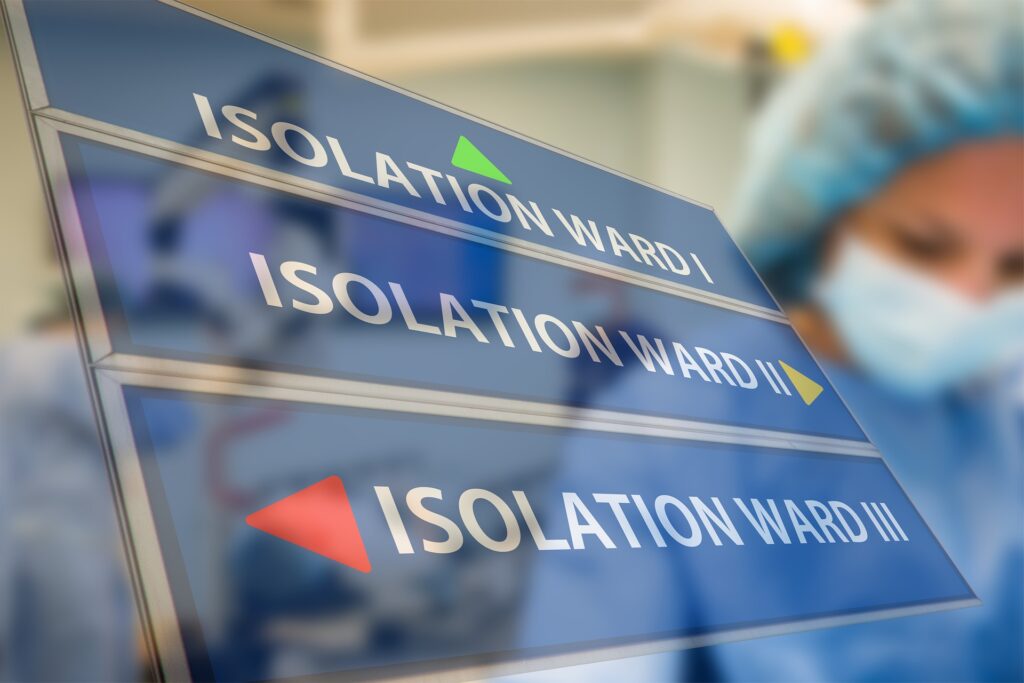Editor’s note: This analysis is a collaboration between the USC Schaeffer Center for Health Policy & Economics and the University of Minnesota Carlson School of Management’s Medical Industry Leadership Institute, and Management Information Systems Research Center.
“Flatten the curve” has been a rallying cry across the country for the past six weeks as public health officials, policymakers, and the public have debated the best course of action against COVID-19. This term encompasses several public health strategies aimed at reducing the number of new people infected day over day to (and this is the important part) reduce the strain on healthcare resources, thereby preventing hospitals from being overwhelmed.
In past posts, our colleagues have shown hospitals have not seen this surge that was feared. This is good; social distancing and other protective measures seemed to have significantly flattened the curve.
Hospitalizations Give Us a Good Understanding of Whether Health Systems Are on Their Way to Being Overwhelmed
As counties across California inch towards re-opening, more people will potentially expose themselves to the virus. During these critical weeks and months, it will be increasingly important to watch the number of COVID-19 patients admitted to hospitals, specifically ICUs. Of course, hospitalizations are a lagging indicator (most patients with a severe case develop symptoms within seven days and are hospitalized about a week later), but they tell us the health of the population and whether or not hospitals might have issues with meeting future demand. We analyzed the percent of hospital and ICU beds used by COVID-19 patients by urban counties in California to see where health systems stand.

Normalized by population, current COVID-19 patient hospitalizations vary across the urban counties we looked at, but most are showing signs of leveling off. Orange County is one outlier, with significant upward growth in the past month. L.A. County, which has been the epicenter for the state, is still an outlier but has documented a significant reduction in the past month and is showing signs of leveling off.

We analyzed COVID-19 hospitalizations relative to the total number of hospital beds in the county. The end of April marked a peak in the percent of hospital beds occupied by COVID-19 patients in L.A. County, at just under 10%. Since then it has steadily decreased (graph above), and now hovers at around 6.5%. With the exception of L.A., across all counties, less than 6% of hospital beds are occupied by COVID-19 patients.
As you can see in the graph below, the L.A. County has seen a similar trend in the percent of ICU beds occupied by severe COVID-19 patients, down from a high of 28.6%. San Francisco County has also seen significant reductions within their ICUs. Most counties are now reporting between 10-20% of their ICU beds are occupied with coronavirus patients.

Policymakers Should Pay Close Attention to Orange and San Diego County
Our analysis reveals that while most urban counties are holding relatively flat or decreasing, Orange and San Diego Counties are both reporting increases in hospital and ICU beds occupied by COVID-19 patients. For example, since mid-April, the percent of beds occupied by COVID-19 patients in San Diego County has increased from 16.4% to 23%—surpassing L.A. County. While this may be due to localized outbreaks in correctional facilities or assisted living homes, these trends should be watched closely as these counties start to open up to ensure the health systems have capacity to treat new patients.

You must be logged in to post a comment.